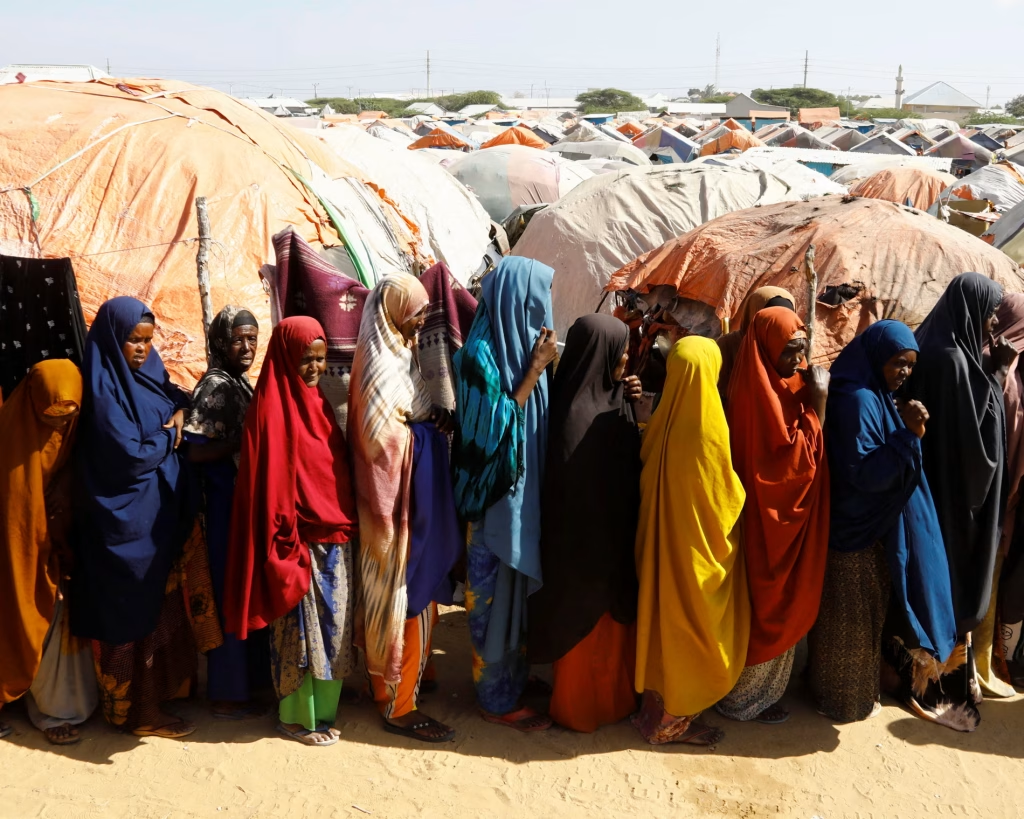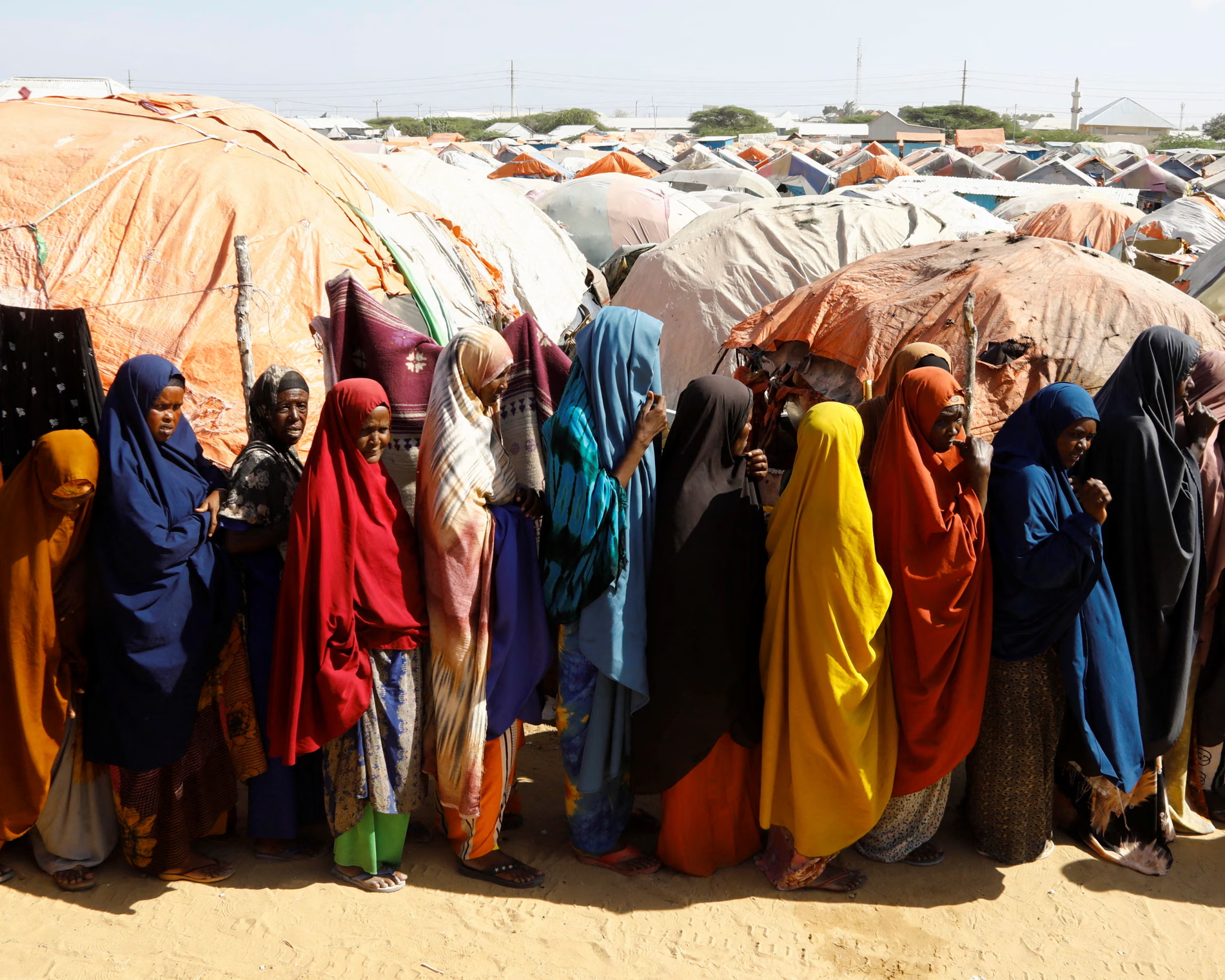In early July, Maryan Abdikadir Geedi made a painful decision: to abandon her modest shop in Moqokori, a town in Somalia’s Hiiraan region. At 46, she was no stranger to instability — Moqokori had long shifted between government and militant control — but this time felt different.
“Control over Moqokori changes like the rain,” she said. “But this time, it wasn’t just another storm.”
Her fear reflected a broader crisis. Since February, al-Shabaab has mounted one of its most aggressive offensives in years, reclaiming territory lost to government and clan militia forces during the 2023 counteroffensive — an operation heavily supported by U.S. and Turkish airpower. By mid-2025, the insurgents had pushed to within 40 kilometers of Mogadishu, sparking fears the capital could fall.

“When the rumors spread that they were coming, the fear became unbearable,” said Geedi, who fled with her husband and nine children to Buloburde, roughly 90 kilometers away.
Although frontlines have stabilized in recent weeks, Somalia’s federal security forces remain largely defensive. In Mogadishu, construction cranes still crowd the skyline, but beneath that image of renewal lies an enduring sense of fragility.
Washington has intensified airstrikes against al-Shabaab but has stopped short of redeploying the hundreds of U.S. special forces withdrawn under former President Donald Trump. Instead, Turkey, the UAE, Uganda, and now Egypt have expanded their military roles through training and direct combat support, supplementing the African Union Mission, which still fields thousands of troops.
Analysts warn that Somalia’s army would likely collapse without foreign backing.
“It’s a strategic stalemate,” explained Samira Gaid, a regional security analyst with the Mogadishu-based think tank Balqiis. “Al-Shabaab has little incentive to take Mogadishu. They dominate the rural heartland and dozens of smaller towns. The government’s survival depends on the external edge provided by foreign troops.”
The recent offensive has also sapped morale among Somalia’s fragmented security forces and undercut the credibility of President Hassan Sheikh Mohamud, who vowed a “total war” on the militants after returning to power in 2022.
“I’ve lost 20 friends and been wounded twice,” said a Somali National Army veteran in Beledweyne. He listed several towns — all of which have since fallen back under al-Shabaab’s control. “They fight for paradise. We fight for paychecks,” he said bitterly.
He warned that the militants’ newfound freedom of movement — following their capture of key towns in Hiiraan — now threatens central and southern Somalia, adding, “They are moving fast.”
Experts argue that the insurgents’ success stems not from newfound strength but from governmental weakness.
“The balance of power on the ground mirrors the political climate — and that climate is dire,” said Ahmed Soliman of Chatham House. “Deep divisions among federal and regional authorities make coordination nearly impossible. Al-Shabaab is exploiting a fractured state.”
Funding uncertainties for the $160 million-a-year African Union mission further complicate operations, eroding the sustainability of foreign-led stabilization efforts.
Three weeks after Moqokori fell, al-Shabaab captured the strategic town of Maxaas, triggering another wave of displacement.
“With every day, more people left — homes abandoned, markets empty,” said Nimo Abdi Barre, 37, who fled with her family to Beledweyne, the capital of Hirshabelle province. The journey was harrowing, she recalled: “The kids were vomiting and screaming, and we feared IEDs on the road. Only faith got us through.”
Now living with relatives, Nimo struggles with the paradox of being a refugee within her own country. “Nothing is worse than feeling displaced on your own soil,” she said. “I want to go home — but I don’t know if I ever will.”
Al-Shabaab’s latest resurgence underscores the cyclical nature of Somalia’s conflict: local governance collapses, foreign interventions briefly shift the balance, and insurgent networks reassert themselves amid political fragmentation. Despite foreign support and momentary victories, the Somali state remains trapped between dependency and dysfunction, with ordinary citizens like Maryan and Nimo bearing the cost of a war that seems perpetually unwinnable.



